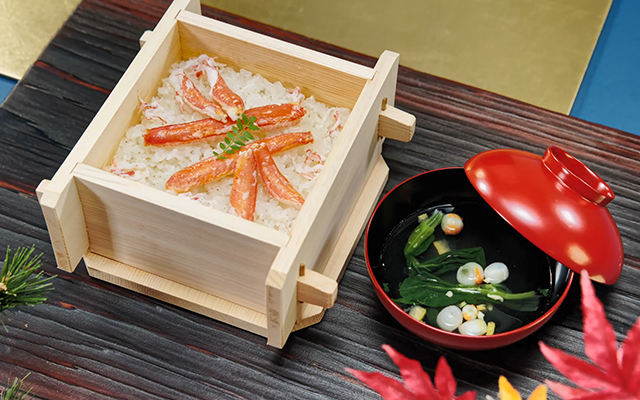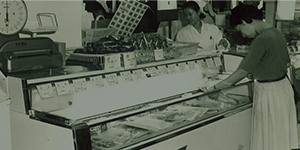Japanese Food Culture
Food with history, fish with purpose
One of the best things about Japanese cuisine is how versatile it is. Whether it’s sushi taking the global culinary scene by storm, or ramen making a slow-but-steady emergence in the Western world. One thing’s for sure: Japanese food always dishes out a tasty eating experience, good for the body and mind. But, no matter the different forms it takes, fish remains at the heart of Japanese diet and culture.

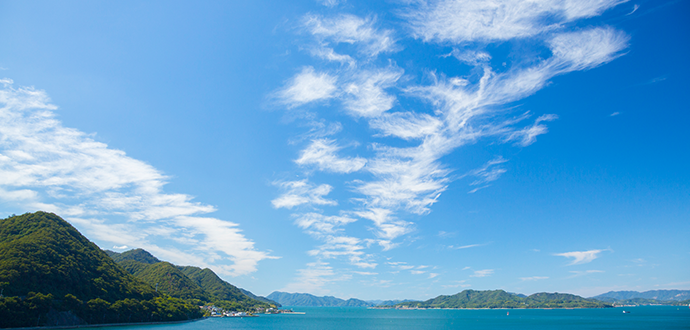
The fish of the matter
For centuries, fish has been the main staple of the Japanese diet — in fact, meat was rarely eaten in Japan until 1872, following a 1,200 year ban. Surrounded by water and filled with streams blessed with freshwater fish, it’s only natural fish remains the primary source of protein for the island. Luckily, fish is the healthiest protein, rich in omega-3 fatty acids that preserve heart-health and boost brain-power.


Fishing for good fortune
Walk around anywhere in Japan and you’re bound to come across a shrine. Each one is dedicated to a specific god: those of war or the sea, for example. Watatsumi is the water deity. And fisherman visit Watatsumi shrines throughout the country to pray for good fortune in fishing — they even offer fish to help seal the deal. It’s a reflection on the deep bond between the people of Japan and foods like fish, which connect the spiritual world to the earthly one.

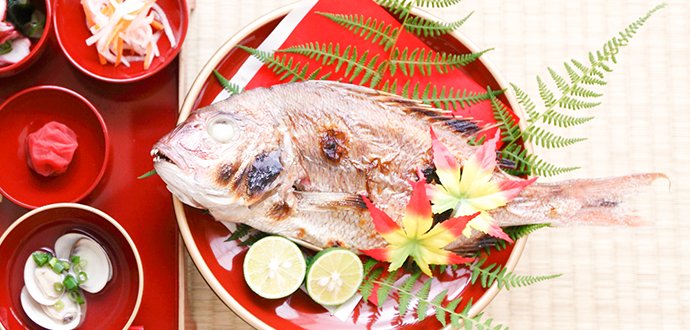
Fish and foremost
Okuizome (or first meal) is a Japanese ritual that celebrates new babies coming into the world. Like a baby shower, except after the baby is born, and with plenty of fish. About 100 days into a new baby’s life, a full-course meal is served. The oldest family member of the same gender pretends to feed the baby fish (pretends, since they’re not old enough to chew solid food yet). It’s a celebration of new life, family, and the foods that bring it all together.


Dashi-ngly delicious
The soul of Japanese food is dashi, a soup stock made from fish. It’s in almost everything. It’s the basis for sauces and seasonings used in nearly all Japanese cooking. There is a world of variation when it comes to dashi, but the most common form is made with kelp and bonito flakes. Without dashi, there is no umami, the Japanese word for a delicious, savory taste.
The opposite of bacon and eggs


The opposite of
bacon and eggs
A traditional Japanese breakfast has variety. The rich diversity of ingredients in Japanese breakfasts are seasonal, but the foundation stays the same: fish, rice, miso soup, and a side dish like pickles or vegetables. This is Japan’s soul-food: real home-cooking, the stuff Japanese families enjoy when they’re relaxing at home. A far-cry from bacon and eggs, but a totally different type of delicious, for sure.
Bento: ambitious and nutritious
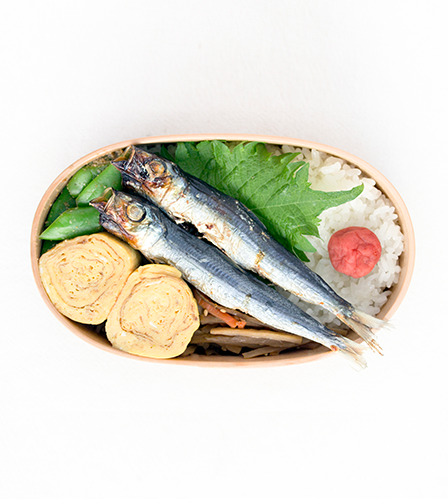



We don’t always have time to prepare a home-cooked meal for our family, though. Especially since more and more people are joining the workforce. But, when it comes to ready-made or frozen meals, Japan has plenty of healthy options to choose from. Like Bentos: nutritious lunchbox-style meals that can feature both frozen and fresh dishes, usually with fish as the main course. Guilt-free and quick, the perfect combination for the ambitious and the hungry.

Sushi, whenever
Sushi has become a worldwide phenomenon, with chefs everywhere dedicating their entire lives to perfecting the art. Raw fish on top vinegared rice, such simple ingredients, sparked a culinary revolution. But, in Japan, sushi can be casual or formal. Fast-food-like, conveyor belt sushi restaurants serve sushi on a mini-merry-go-round. And formal sushi restaurants are some of the most expensive, luxurious dining experiences in the world.


Filled with the good stuff
DHA and EPA are omega-3 fatty acids found in cold water fish around the world. They boost brain function, support cardiovascular health, and are linked to healthy aging throughout life. Thankfully the Japanese diet is rich in natural sources. So Japanese food companies, domestic and international, are putting the health benefits of DHA and EPA to work by developing functional foods: meals and dishes loaded with extra omega-3 fatty acids to boost the health-giving properties of what we eat.
Where there’s food, there’s life
Itadakimasu! — it’s a common Japanese phrase that means “I humbly receive.” It’s almost always used before eating to show appreciation for the food before you dig in, like the religious custom of saying grace before a meal. Except everyone says it (sometimes in unison). But, more than that, itadakimasu shows appreciation for the life of everyone and everything. That’s right, nature and vegetables have life and need love too. The ocean is our business at Maruha Nichiro, but it’s also our livelihood: the two are inseparable. Which is why our slogan — For the ocean, for life — shows our deep appreciation for what keeps us going.


